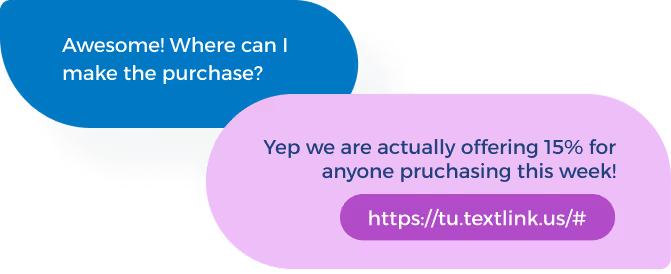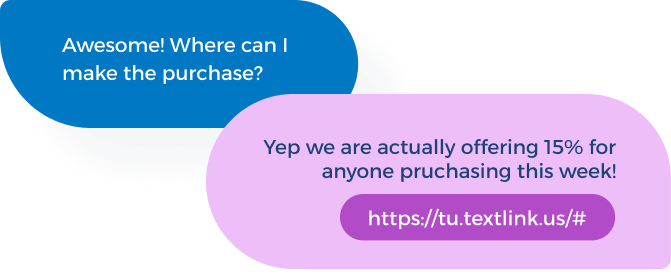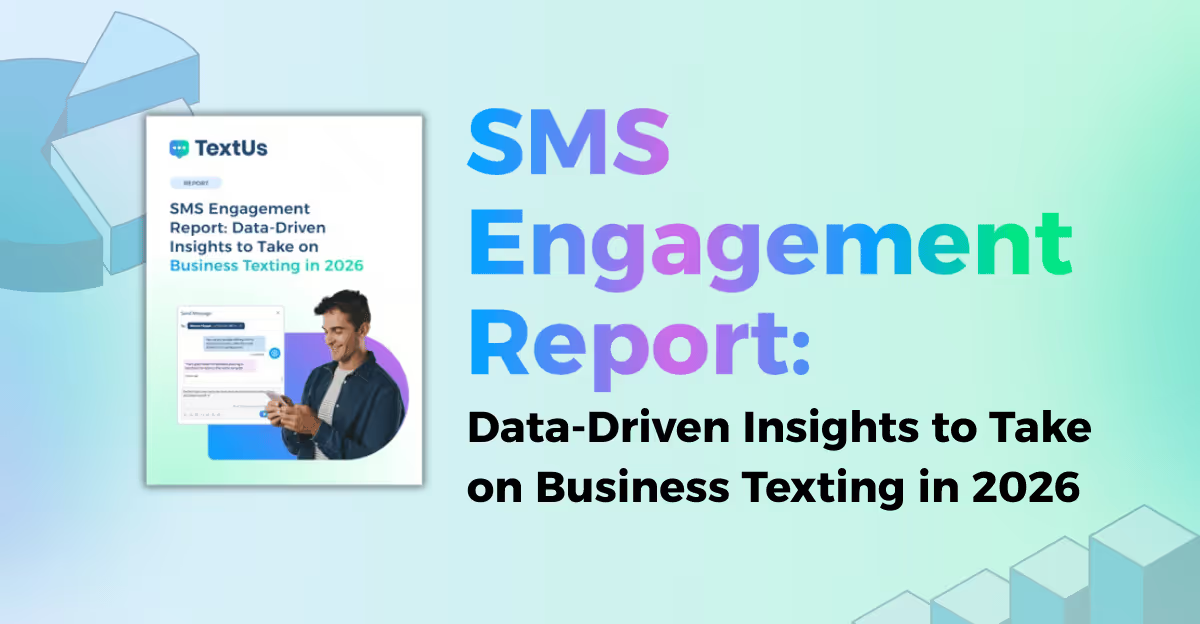Short Code Texting for Business Engagement: A Quick Guide
Learn how short code texting can boost business engagement. Discover its benefits, top use cases, and best practices for effective SMS marketing.
Published
October 9, 2025
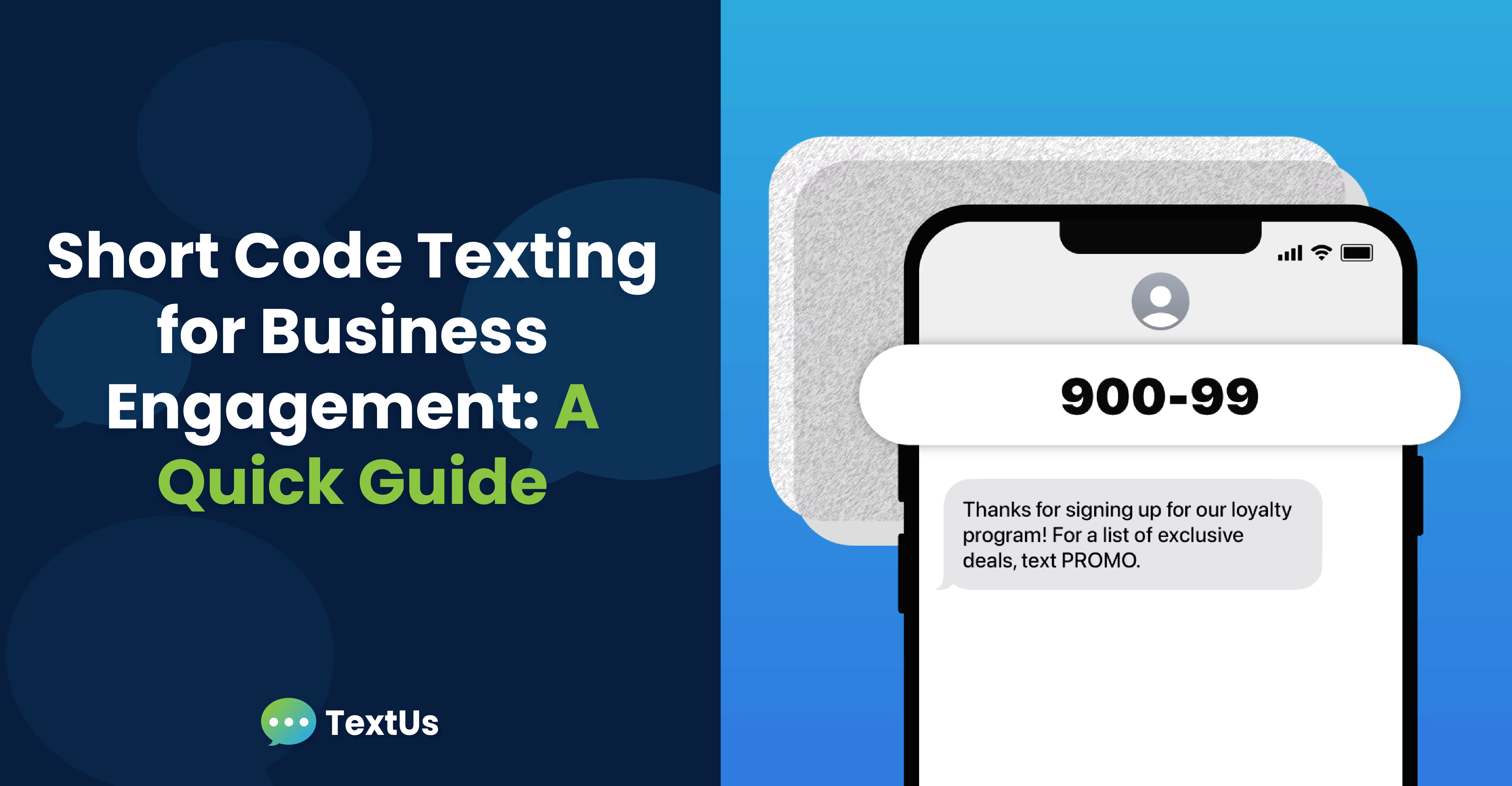
Getting customers’ attention isn’t easy. Between overflowing inboxes and constant phone alerts, your message has seconds to make an impression.
Many businesses are turning to short codes. These are short, easy-to-remember numbers for sending messages to thousands of people at once. It’s also secure and gives your brand a professional presence.
In this article, we’ll walk you through everything you need to know about short code texting. We’ll also cover why short codes are effective and how dedicated SMS platforms make it simple to manage your campaigns and stay compliant.
What Is Short Code Texting?
Short code texting is a method businesses use to send messages from short, 5–6-digit numbers instead of full-length phone numbers.

These short codes are registered and approved by mobile carriers, which makes them reliable for reaching a large number of contacts at once. Brands use them for alerts, promotions, two-factor authentication, and customer updates.
Unlike regular SMS numbers from your phone, short code texting allows high-volume sending without being flagged as spam. This makes it ideal for businesses that want to communicate with thousands of customers instantly, without worrying about message deliverability.
But why would you want to use short code texting when you could email or call your subscriber lists?
It's simple. Short code text messages reach people faster and feel more personal. Studies show SMS has an open rate of 98%, while emails average around 20%.
Many companies use an SMS short code service to manage campaigns. SMS marketing software like TextUs handles message delivery, keyword automation, and compliance checks.
They allow you to focus on crafting good messages instead of dealing with network operators and approval steps required by wireless carriers.
Types of Short Codes
You can choose from different types of short codes based on your goals, budget, and message volume. Each has its own use case and cost difference, so understanding them helps you pick the right fit for your text marketing campaigns.
Vanity Short Codes
Vanity short codes are custom numbers that a business chooses for itself, designed to be an easy-to-remember number.
These dedicated codes follow an easy-to-recognize pattern, like 454545 or 606060, or may align with your brand’s name or slogan. Because they stand out, vanity short codes are a great choice when running national campaigns or making a lasting impression.
Depending on your brand, a vanity short code is a better option for your business. Vanity codes can help create trust with your audience since they’ll see your number and automatically know it’s from you.
For example, a restaurant uses a vanity short code like FOODIE (366343) to promote its weekly deals. This consistency across every area code helps with brand recognition and recall.
When using a vanity short code, it’s important to partner with a trusted texting software to handle the technical and compliance parts.
TextUs guides you through the process of obtaining a dedicated short code to help you stay compliant with the Telephone Consumer Protection Act (TCPA). The review process takes several weeks.
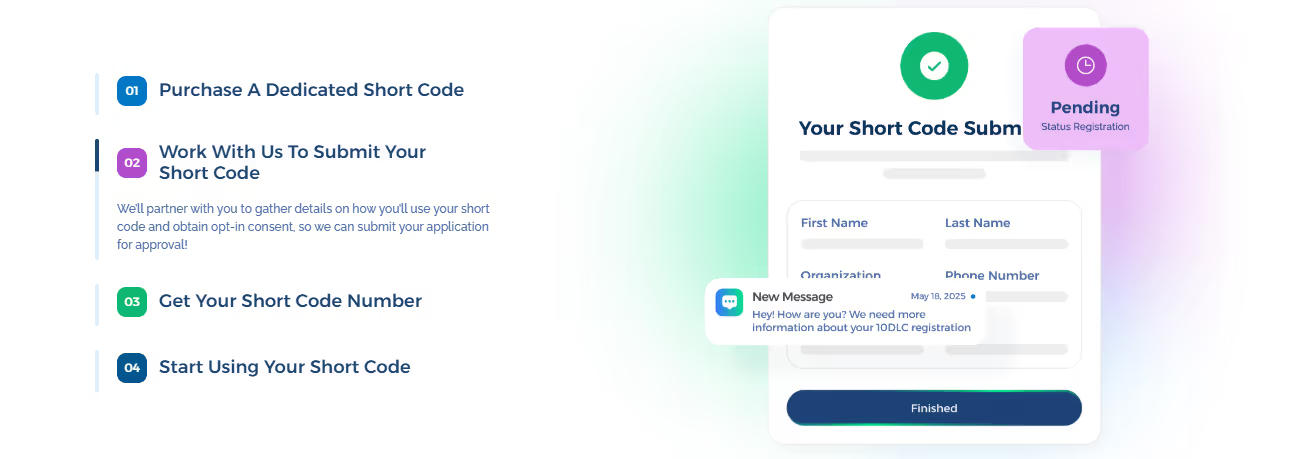
Purchase your dedicated SMS short code or book a demo with TextUs today!
Random Short Codes
Random short codes are numbers that network operators automatically assign to a business instead of letting the company pick one. These numbers are randomly assigned during setup and don’t follow a specific pattern or branding style.
Even though these numbers aren’t as memorable as vanity short codes, they serve the same main purpose of sending large volumes of texts.
These short codes are popular with businesses that want to start short code service campaigns without paying for a premium vanity number.
Since carriers assign them automatically, the setup and approval process tends to be faster, and the overall cost is lower. Leasing one usually involves a monthly fee, which depends on your carrier and campaign type.
While random codes are a solid option for function-focused companies, numbers like 543762 aren’t as recognizable as vanity codes such as 454545. However, for one business managing alerts, two-factor authentication, or internal notifications, random short codes work well.
Use Cases for Short Codes Across Industries
There are tons of ways to make short code messages work for your brand, no matter your industry.
Staffing and Recruitment
It’s no secret that the job market is competitive. In fact, 47% of job seekers say texting is their preferred communication method when connecting with employers during the hiring process.
Examples
- Instant job alerts: Send notifications for new openings the moment they go live
- Interview confirmations: Reduce no-shows by confirming interviews via text
- Application status updates: Keep candidates informed with real-time updates
- Employee engagement: Keep current staff informed about company announcements, recognition programs, or policy changes
- Shift scheduling: Notify temporary workers about available shifts or schedule changes
Short code texting is the easiest way for recruiters and staffing agencies to stay ahead. Because text messages have a higher open rate, recruiters can engage candidates faster than with emails or calls.
Retail and Ecommerce
If you’re a small business, one of your main goals is to drive lead generation and increase sales. SMS short codes can help you do that.
Examples
- Promotional campaigns: Send alerts about new arrivals, limited-time offers, and flash sales
- Abandoned cart reminders: Encourage customers to complete their purchases
- Loyalty programs: Reward frequent buyers with personalized discount codes
- Shipping updates: Keep customers informed about delivery status
- Product launch announcements: Generate excitement for upcoming collections or collaborations
Retail brands that text regularly create a sense of urgency and exclusivity. With a short code texting app, you can set up automated sequences while tracking delivery and open rates.
Hospitality and Services
Customers want quick, accurate updates, and short code texting makes that easy.
Examples
- Booking confirmations: Automatically confirm hotel or restaurant reservations
- Appointment reminders: Notify clients about upcoming services (like spa sessions or home repairs)
- Service updates: Provide real-time status on vehicle repairs, home cleaning, or deliveries
- Customer satisfaction surveys: Collect quick feedback right after a visit or service
- Local event announcements: Share updates about festivals, discounts, or seasonal specials
These small touches improve customer experience, boost bookings, and encourage repeat confirmations.
Education and Nonprofits
Schools, universities, and nonprofit organizations depend on communication for student engagement.
Examples
- Event reminders: Notify students, parents, or donors about upcoming events
- Emergency announcements: Send fast notifications about weather or safety issues
- Registration deadlines: Remind students about enrollment or form due dates
- Donation drives: Make giving simple by texting keywords to donate
- Volunteer coordination: Keep volunteers updated on schedules and changes
Short codes allow schools and nonprofits to stay connected, improve participation, and build stronger relationships with their communities.
Financial Services
Banks, credit unions, and payment platforms depend on trust and speed. Short code texting lets them send secure, time-sensitive updates to customers.
Examples
- Fraud alerts: Warn customers instantly about suspicious activity
- Payment reminders: Send friendly notices for upcoming due dates
- Transaction notifications: Confirm deposits or withdrawals in real time
- Loan updates: Inform applicants about approval or documentation status
- Authentication codes: Provide two-factor verification for account security
Short codes for financial and lending institutions promote a safe and reliable way to communicate, which reduces risk while improving customer confidence.
What Makes Short Code Texting Effective?
There’s a reason short code texting continues to be one of the most powerful tools in marketing. It simply works!
If you’ve been in the marketing space for any length of time, open rates and read rates will tell the story. The average American also checks their phone 205 times per day, which breaks down to roughly once every 5 minutes.
Another reason for the success of short code texting is its simplicity. Texts are short, to the point, and easy to read. That makes marketing messages more personal than any email or social media post.
But instant engagement and high open rates are not the only reasons short code messages perform so well. They also bring several benefits that make them valuable for any business:
Brand Recognition
Since short codes are usually a six-digit number, they’re easier to remember than a full phone number.
A random or vanity code can help your audience instantly identify your brand when they see your message appear.
For example, a restaurant using 454545 for promotions or a gym using 606060 for reminders makes their texts more recognizable and trustworthy.
Customers start associating that short code number with your business, and over time, it builds familiarity. It also helps prevent your texts from being mistaken for spam or ignored.
Before launch, you will go through the short code registry to verify ownership and follow text message compliance regulations that help protect consumers.
Simple Opt-In Process
It’s quick and easy for users to receive text messages through a short code. Instead of filling out long forms or clicking through multiple pages, recipients can text a keyword to your number.
For example: “Text JOIN to 20202.” That’s all it takes. This convenience encourages more people to sign up and helps you grow your subscriber lists faster.
Before going live, you need to submit a short code application and a service approval form for review. Once it passes the short code audit, the code moves toward final approval.
Larger Audience Reach
Short codes are built for speed and scale. A single short code can send up to 300 messages per second, which allows you to reach large audiences instantly.
This performance is far better than shared short codes, long codes, or toll-free numbers, which often face slower delivery times. If you’re promoting a flash sale, confirming appointments, or sending appointment reminders, short codes guarantee better delivery and timing accuracy.
Better Engagement and Conversion Rates
Short code texting drives stronger responses from customers.
People don’t just open texts but also act on them. Because messages are concise and direct, recipients are more likely to reply or take the next step.
Research shows SMS response rates can reach 45%, compared to less than 6% for email. That level of engagement is why short codes are a favorite for business texting across industries.
Works Well with Other Marketing Channels
Short codes also fit easily into your broader text marketing and advertising strategy. You can include them in social posts, flyers, or web banners to give customers a quick way to engage.
A simple call-to-action like “Text DEALS to 50505 to get 10% off your next order” can turn casual browsers into buyers.
Whether you’re applying for a new short code or adding one to your existing campaign, it’s a proven way to connect with customers instantly and keep communication simple.
Power Your Business with Short Code Texting—Try TextUs!
If you want your messages to be remembered and acted on, short code texting is the way to go.
Customers are checking their phones hundreds of times a day, and with the right strategy, your texts can be the ones that capture their attention.
TextUs helps you send professional, high-volume messages through verified short codes while staying compliant and organized.
From setup and carrier approval to campaign tracking and automation, this SMS platform handles the hard parts so you can focus on connecting with your audience.
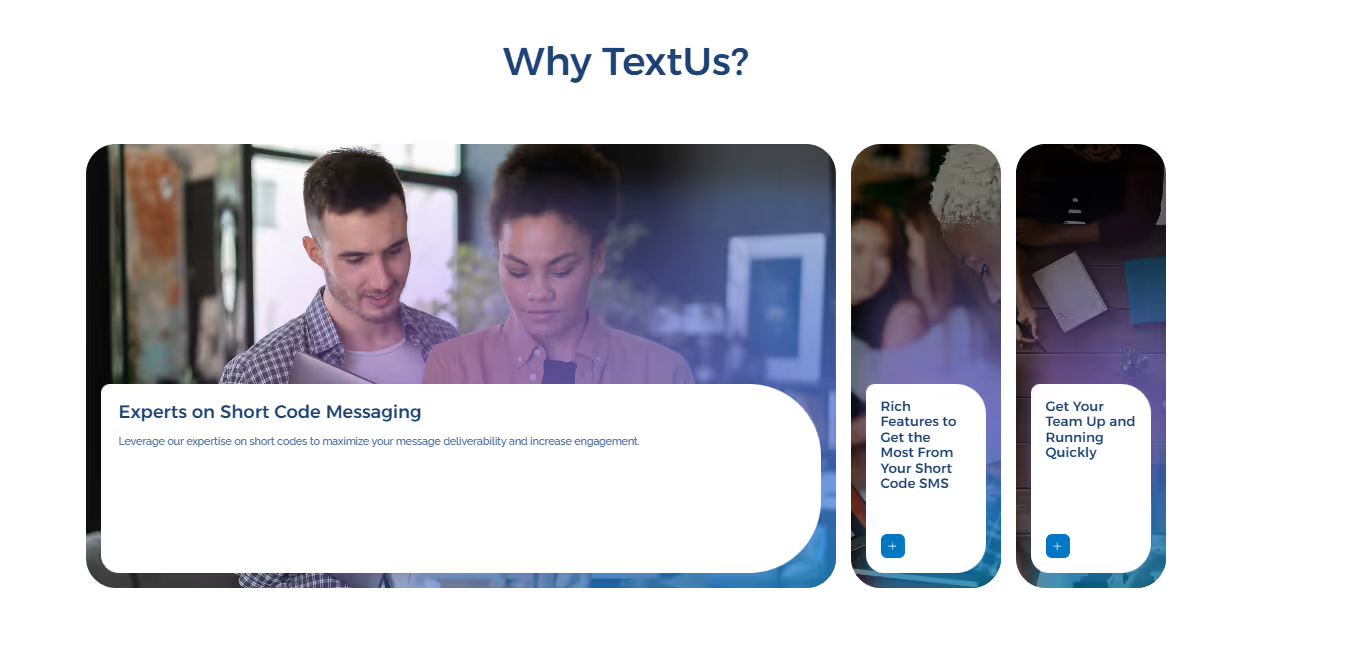
Short code texting doesn’t have to be complicated with the right SMS service platform. Book a demo with TextUs today and see how quickly real conversations turn into real results!
FAQ About Short Code Texting
Why would someone use a short code to text?
People use short codes because they’re fast, safe, and easy to remember. Businesses rely on them for sending text messages like sale alerts, appointment reminders, and verification codes.
Since short code is already pre-approved by carriers, messages reach customers at high speeds with fewer delivery issues.
These texts come from verified five or six-digit numbers instead of random phone numbers. Therefore, customers know they’re from real brands and not spam.
How do I find who owns a shortcode?
You can check who owns a short code by looking it up in the U.S. Short Code Directory or by asking your mobile carrier.
You can also text “HELP” to the number. Most short codes automatically reply with the business name, support details, and instructions to opt out if you no longer wish to receive messages.
How to get short codes for text messaging?
You’ll need to lease one through an SMS marketing platform. The provider handles registration, carrier approval, and the provisioning process.
However, final approval depends on meeting all carrier requirements and may involve delays. Once approved, you can begin sending campaigns for promotions, reminders, or updates.
You can also choose between random short codes (assigned automatically) or vanity short codes (where you select your own number).
If multiple brands happen to use the same short code through shared carrier routes, the reply will identify which specific company owns that keyword or campaign.
Who uses short codes to text?
Short codes are used by many types of businesses, such as:
- Retailers sending sale alerts
- Banks sending account or security messages
- Healthcare providers sending appointment reminders
- Recruiters sending job updates
- Hotels and restaurants for sending booking confirmations
Any business that needs to reach lots of people quickly can benefit from short code texting.
Continue Reading
Frequently Asked Questions
Business Texting
Built for Results
Create and convert pipeline at scale through industry leading SMS software





